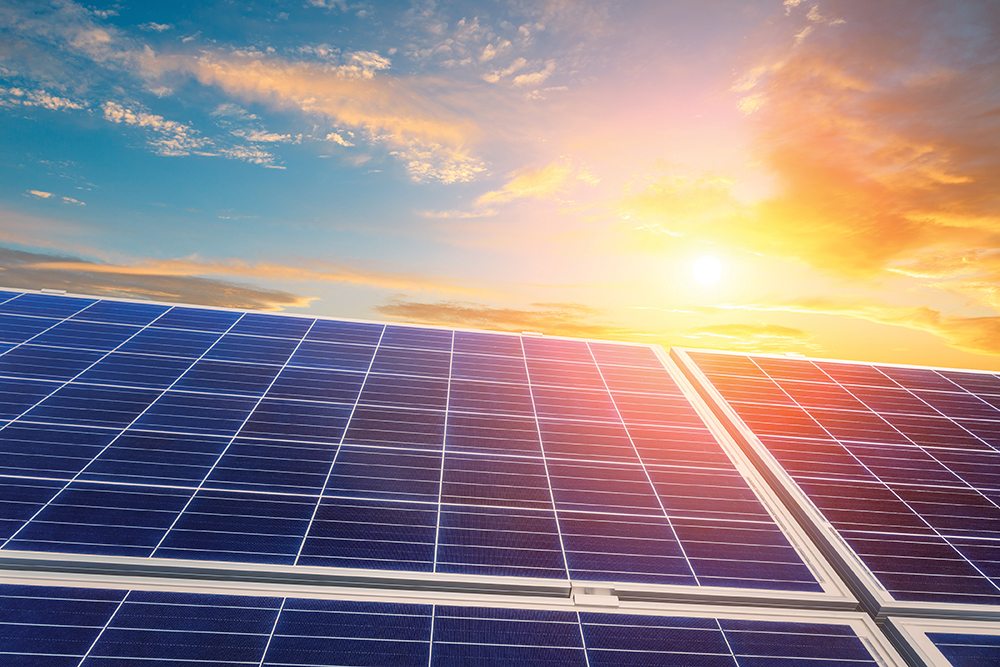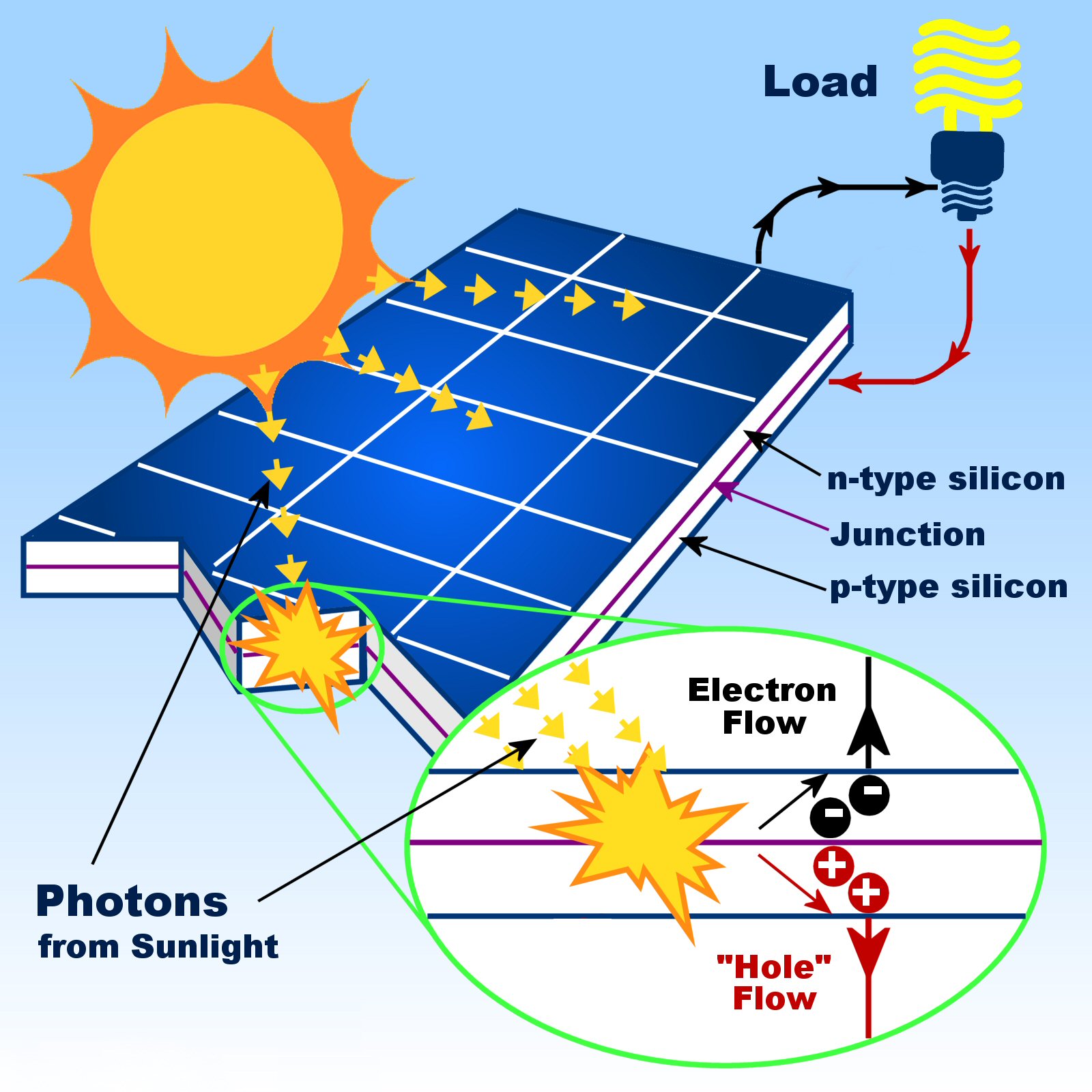When you think of sunlight, you probably picture a bright day at the beach, not electricity flowing into your home. But what if I told you that sunlight can power your lights, gadgets, and even your electric car? That’s the magic of photovoltaic energy—turning rays of sunshine into real, usable electricity.
Photovoltaic energy (often just called “solar energy”) is a type of renewable energy that comes from sunlight. The term “photovoltaic” is a combination of two words: photo (light) and voltaic (electricity). In simple terms, it’s all about using light to generate electricity. The key player here? The solar panel.
Solar panels are made up of solar cells, typically made from silicon. These cells absorb sunlight and convert it into electricity, thanks to a process called the photovoltaic effect (don’t worry, we’ll break this down shortly).
Unlike fossil fuels, photovoltaic energy doesn’t involve burning anything, which means no nasty greenhouse gas emissions. It’s clean, quiet, and gets its power from the most reliable source we have—the Sun.
How Does Photovoltaic Energy Work?
At its core, photovoltaic energy is pretty simple:
- The sun shines.
- Solar panels soak up the sunlight.
- Electricity is born.
But behind the scenes, there’s some fascinating science going on. When sunlight hits a solar panel, its photons (tiny particles of light) collide with the solar cells. This interaction knocks loose electrons in the cells, creating an electric current. This flow of electricity is captured and directed for use in your home or business.
Here’s a quick analogy: Think of photons as tiny bowling balls and electrons as pins. When the photons strike, they knock over the pins (electrons), causing a chain reaction that generates power. Neat, right?
Is Photovoltaic Energy Renewable?
Yes! Photovoltaic energy is 100% renewable because it relies on sunlight—a resource we won’t run out of for another 5 billion years (thanks, Sun). Unlike coal or oil, which deplete over time, sunlight is infinite and freely available. Plus, solar panels can keep producing electricity as long as there’s daylight, making it one of the most sustainable energy sources we have.
In fact, a single hour of sunlight hitting the Earth contains enough energy to power the entire world for a year. All we need to do is harness it more effectively. Now that’s a fun fact to share at your next trivia night!

The Science Behind Photovoltaic Energy
What Is the Photovoltaic Effect?
The photovoltaic effect is the superhero behind solar panels—it’s the process that transforms sunlight into electricity. It was discovered way back in 1839 by French physicist Alexandre-Edmond Becquerel. (Yep, even in the 19th century, people were thinking about how to harness the Sun’s power. Forward-thinking, right?)
Here’s how it works:
When sunlight (made up of photons) hits a solar cell, it excites the electrons in the material—usually silicon. These excited electrons break free and start moving. This movement creates an electric current, which is what we harvest to power our homes. It’s like a domino effect: photons give electrons a push, and the electrons rush off to do useful work.
Types of Solar Cells
Not all solar cells are created equal. In fact, there are three main types, each with its own quirks:
- Monocrystalline Solar Cells
- Made from a single, pure silicon crystal.
- Known for their high efficiency (up to 22%) and sleek black appearance.
- Best choice if you have limited roof space but want maximum energy output.
- Downside? They’re a bit pricier.
- Polycrystalline Solar Cells
- Made from multiple silicon fragments melted together.
- Slightly less efficient (around 15-17%) but more affordable.
- Typically have a bluish tint.
- Thin-Film Solar Cells
- Made from layers of photovoltaic material (like cadmium telluride or amorphous silicon) on a flexible backing.
- Lightweight, flexible, and great for unconventional applications like curved surfaces.
- However, they’re the least efficient of the three (around 10-12%).
So, whether you want the most power, the best value, or panels that can fit on funky designs, there’s a solar cell for you!
Efficiency of Photovoltaic Energy Systems
The efficiency of a solar panel depends on how much sunlight it can convert into electricity. While the most efficient solar panels on the market today hit around 22-23% efficiency, researchers are constantly pushing the boundaries.
Here’s a quick table comparing panel types and their efficiencies:
| Solar Panel Type | Efficiency Range | Best Use Case |
|---|---|---|
| Monocrystalline | 18-22% | Small roofs, high energy needs |
| Polycrystalline | 15-17% | Budget-friendly installations |
| Thin-Film | 10-12% | Lightweight or portable setups |
Factors like shade, temperature, and even dust can impact efficiency. For example, if your panels are covered in leaves or grime, they won’t capture as much sunlight. That’s why regular maintenance is key!
Fun fact: The highest efficiency ever achieved in a lab setting is 47.6% using a specialized multi-junction solar cell. But for now, those panels are more for space missions than rooftops.

Benefits of Photovoltaic Energy
Environmental Benefits
One of the biggest perks of photovoltaic energy is how much it helps the planet. Unlike fossil fuels, which belch carbon dioxide and other pollutants into the air, photovoltaic systems generate clean energy without emitting greenhouse gases. Installing solar panels on your home, for instance, is like planting dozens of trees—or more!
According to the U.S. Department of Energy, a typical residential solar system can reduce carbon emissions by roughly 3-4 tons per year, depending on energy usage. Over 25 years (the average lifespan of solar panels), that’s equivalent to saving about 100 tons of CO2 emissions. Talk about a green thumb!
And since sunlight is an infinite resource, photovoltaic energy doesn’t drain the planet’s reserves or require mining, drilling, or deforestation. The only environmental cost comes from producing and transporting the panels, which is much lower compared to extracting and burning fossil fuels.
Economic Benefits
Sure, the initial investment in photovoltaic systems can be intimidating, but here’s the kicker: once installed, solar panels can save you a fortune on electricity bills. In sunny regions, homeowners can slash their electricity costs by 50% or more.
Many countries also offer tax credits, rebates, and incentives to make going solar more affordable. For instance, in the U.S., the federal solar tax credit allows homeowners to deduct 30% of installation costs from their taxes. Add state incentives into the mix, and the savings stack up fast.
Here’s another cool fact: you can even make money with solar panels. Excess electricity generated by your system can be sold back to the grid through a process called net metering. It’s like getting paid to soak up the Sun!
Scalability and Versatility
One of the most underrated advantages of photovoltaic energy is how scalable it is. Whether you’re installing a single solar panel on a camper van or setting up a massive solar farm capable of powering entire cities, photovoltaic systems can adapt to almost any need.
Here are some of the ways photovoltaic energy is being used:
- Residential Solar Panels: Rooftop systems to power homes.
- Commercial Solar Farms: Large-scale setups for utility companies.
- Off-Grid Solutions: Solar-powered water pumps, lighting, and even remote medical facilities in rural areas.
- Portable Panels: Perfect for camping or mobile devices.
Photovoltaic energy has also been a game-changer for developing countries, providing electricity to areas that previously had no access to power. Solar lanterns, for example, are replacing kerosene lamps in many villages, improving air quality and reducing fire hazards.
Real-Life Success Stories
Let’s look at a couple of examples where photovoltaic energy made a massive impact:
- The Tengger Desert Solar Park in China: Known as the “Great Wall of Solar,” this facility spans 43 square kilometers and has a capacity of 1.5 gigawatts, enough to power more than a million homes.
- The Tesla Gigafactory in Nevada: Powered by its own photovoltaic system, this massive factory is an example of how commercial enterprises are embracing solar to cut costs and reduce carbon footprints.
It’s clear that photovoltaic energy isn’t just good for the environment; it’s good for your wallet and the world as a whole.

Challenges and Limitations of Photovoltaic Energy
Efficiency Limitations
While photovoltaic energy has come a long way, it’s not without its hurdles. For starters, solar panels aren’t 100% efficient. Most commercial panels convert only 15-22% of sunlight into electricity, meaning a significant portion of the energy remains untapped. Why?
- Some sunlight is reflected off the panels.
- Certain wavelengths of light aren’t absorbed effectively.
- Heat can reduce performance (ironic, right?).
Then there’s the elephant in the room: weather dependency. Photovoltaic systems thrive in sunny conditions, but their output dips on cloudy or rainy days and plummets at night. While battery storage systems can help bridge the gap, they can be costly and aren’t yet widely adopted.
Fun Fact: Germany, despite its often overcast skies, is a global leader in solar energy production. This proves that even less-than-perfect conditions don’t rule out solar power—it just takes smart planning and infrastructure.
Upfront Costs
Ask anyone about going solar, and they’ll probably bring up the cost. While photovoltaic systems have become significantly cheaper over the years (the price of solar panels dropped by 70% between 2010 and 2020), the initial investment can still be steep. On average, a residential solar panel system in the U.S. costs between $15,000 and $25,000 before incentives.
For some families or small businesses, this upfront expense can feel out of reach, even though the long-term savings outweigh the initial costs. Financing options like solar loans and leasing programs can make solar more accessible, but not everyone is aware of these solutions.
Recycling and Disposal
As amazing as solar panels are, they don’t last forever. Most have a lifespan of around 25-30 years, after which their efficiency declines significantly. This raises an important question: What do we do with old panels?
The materials in solar panels—glass, aluminum, silicon, and some rare metals—are valuable and recyclable. However, the recycling process isn’t as developed or widespread as it should be. As the world continues to embrace photovoltaic energy, we’ll need better solutions for managing panel waste.
Encouragingly, organizations like the European Union’s PV CYCLE program are already working to establish effective recycling systems. By 2030, we’re likely to see a surge in recycling technologies for photovoltaic materials.
Land Use and Aesthetic Concerns
Large-scale solar farms can take up significant amounts of land, which sometimes leads to concerns about habitat disruption. However, innovative solutions like floating solar farms (yes, that’s a thing) and agrophotovoltaics—where solar panels are installed above crops—are helping mitigate this issue.
On a smaller scale, some homeowners worry about the aesthetics of rooftop solar panels. While modern designs are sleeker than ever, companies like Tesla are even offering solar roof tiles that blend seamlessly with traditional roofing. So, beauty and sustainability don’t have to be at odds!
While photovoltaic energy does face some obstacles, many of these challenges are already being addressed through innovation and policy. From improved battery technologies to creative land-use solutions, the future looks brighter (literally). As we continue to invest in research and development, the barriers to widespread adoption will shrink.